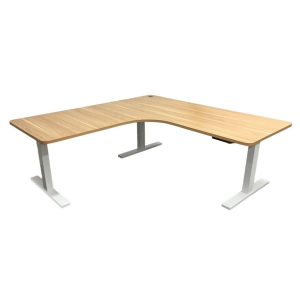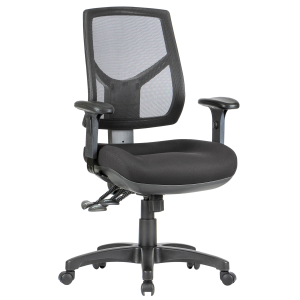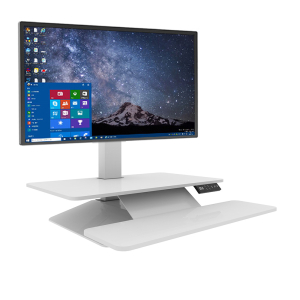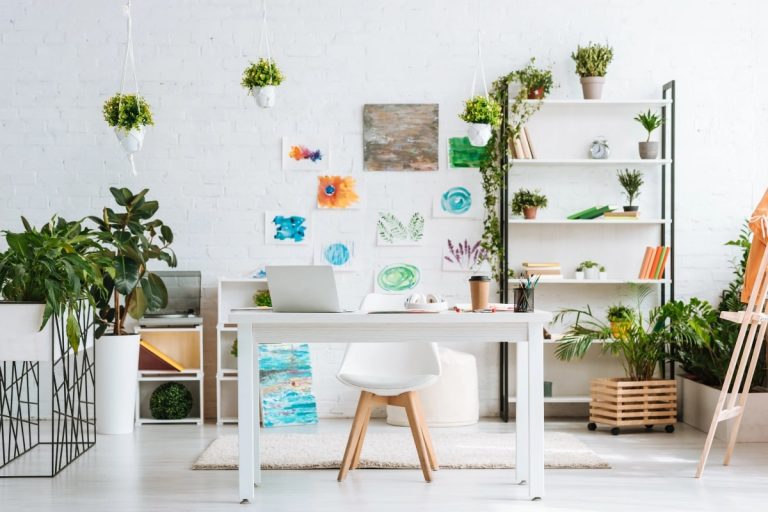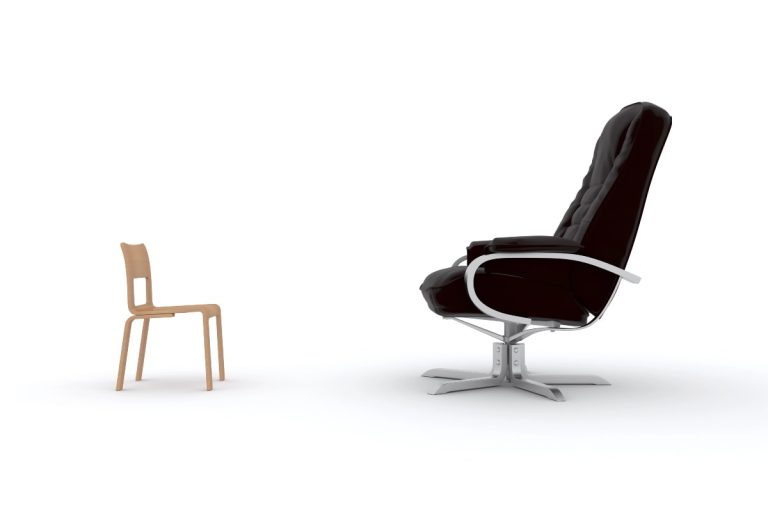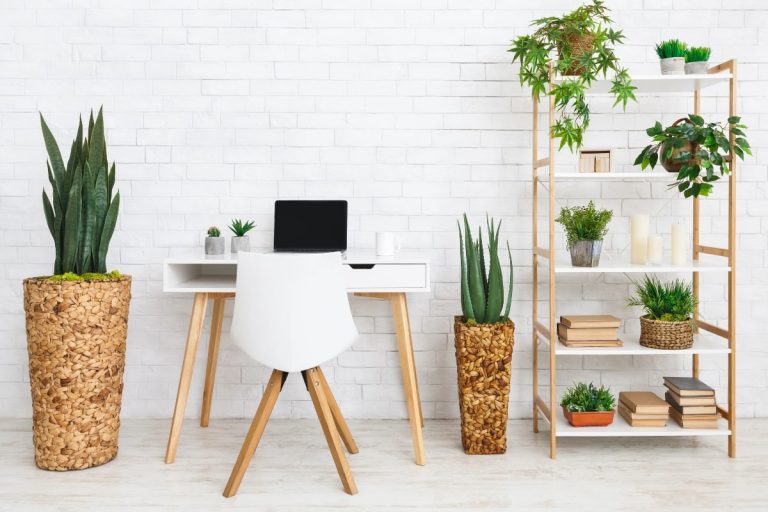
Nothing ruins the zen of your office greenery quite like tiny flies buzzing around your monitor. If you’ve spotted these pesky insects hovering near your desk, you’re dealing with a common but solvable problem. This guide explains how to remove small flies from indoor plants. These small flies are likely fungus gnats, and with the right approach, you can eliminate them while keeping your workspace fresh and productive.
What are those tiny flies in your office plants?
Those pesky little bugs buzzing around your indoor plants are probably fungus gnats. Often confused with fruit flies because they look similar, but they’re completely different insects.
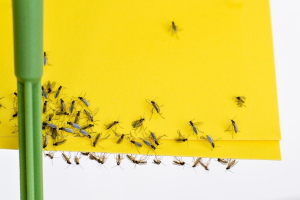
Here’s how to tell fungus gnats and fruit flies apart:
| Feature | Fungus Gnats | Fruit Flies |
| Habitat | Damp soil in indoor plant pots | Kitchens, near fruit bowls or garbage |
| Behaviour | Crawl on soil and hover around houseplants | Fly around ripe or decaying fruit and sinks |
| Attracted To | Moist soil and organic matter in potting mix | Fermenting food, sugary spills, and rubbish |
| Common Location | Around indoor plants or soil surface | Around fruit, drains, or rubbish bins |
| Main Difference | Linked to overwatered plants | Linked to food waste or spoiled fruit |
The lifecycle of these pests moves quickly in Perth’s warm indoor environments. Adult gnats lay eggs in damp potting mix, where they hatch into whitish larvae within days. These larvae feed on organic matter and fine plant roots for about two weeks before emerging as flying adults. The entire cycle takes just 3-4 weeks, which explains why a small problem can quickly become a major infestation.
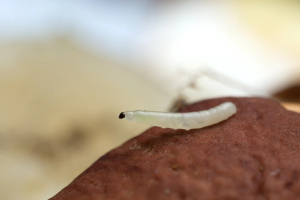
While fungus gnats are harmless to humans (they don’t bite), they’re incredibly annoying and can damage your plants. Heavy infestations weaken root systems, particularly in seedlings and young houseplants. The constant buzzing around your workspace becomes a real nuisance when you’re trying to focus.
Why fungus gnats love Perth workspaces
Understanding what attracts fungus gnats helps prevent future problems. These insects thrive in conditions that many office environments accidentally create.
- Overwatering is the biggest culprit. When soil stays consistently moist, it becomes the perfect breeding ground for fungi that fungus gnat larvae feed on. Many well-meaning office workers water their desk plants too frequently, thinking they’re being caring.
- Poor drainage compounds the problem. Decorative pots without drainage holes trap excess water, keeping the soil soggy for days. Even plants in proper pots can become waterlogged if they sit in saucers filled with standing water.
- Organic matter in potting mix provides food for both fungi and larvae. Rich compost blends that work beautifully outdoors can be too nutrient-dense for indoor use, especially in low-light office conditions where plants grow slowly.
- Limited air circulation in enclosed office spaces means soil takes longer to dry between waterings. Unlike outdoor plants that benefit from natural airflow, indoor plants often sit in still air that keeps their soil damp.

Perth’s consistently warm temperatures, typically 21 to 24°C indoors, create ideal breeding conditions. This temperature range allows fungus gnats to reproduce continuously, unlike outdoor environments, where seasonal changes disrupt their lifecycle.
How to remove small flies from indoor plants
1. Let the soil dry out
The most effective method is also the simplest. Let the top 3 centimetres of soil dry out completely between waterings. This breaks the lifecycle by creating conditions where larvae can’t survive.
Check soil moisture by pushing your finger into the potting mix. If it feels dry at fingertip depth, it’s ready for water.
2. Sticky traps
Yellow sticky traps catch adult gnats before they can lay more eggs in your soil. Place them near infected plants or attach them to stakes pushed into pots. The bright yellow colour attracts flying adults, and the sticky surface traps them permanently.
These traps work best as part of a combined approach. While they won’t eliminate larvae already in the soil, they significantly reduce the number of egg-laying adults.
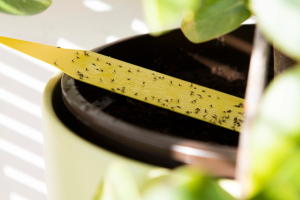
3. Bottom watering plants
Instead of watering from above, place plant pots in shallow trays of water and let them absorb moisture from the bottom. This keeps the soil surface dry while ensuring roots get adequate water.
Bottom watering prevents the constantly moist top layer that fungus gnats need for breeding. It’s particularly effective for plants in decorative pots where you can’t easily add drainage holes.
4. Apply a layer of sand or gravel over the soil
A thin layer of coarse sand or fine gravel on the soil surface creates a barrier that adult fungus gnats struggle to penetrate for egg laying.
Use about 1 centimetre of material for small pots, slightly more for larger containers. Aquarium gravel works well and looks attractive in office settings.
5. Neem oil spray
Neem oil disrupts the insect lifecycle and has antifungal properties that reduce the fungi that larvae feed on. Mix neem oil according to the package directions and spray both the soil and the plant leaves in the early morning or evening.
Apply every few days until you notice a significant reduction in flying adults. Neem oil is safe for office use and won’t harm humans or pets.
6. Hydrogen peroxide soil drench
For heavily infested plants, a hydrogen peroxide soil drench may help control the larval stage. The solution kills larvae upon contact and breaks down into harmless oxygen and water within 24 hours.
Mix one part 3% hydrogen peroxide with four parts water, and pour slowly over the soil until it drains from the bottom. You might see some fizzing as the peroxide works, which is completely normal.
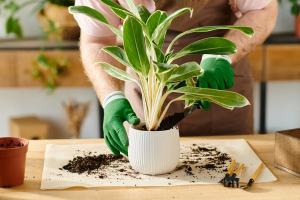
7. Repot as a last resort
If other methods fail, repotting might be necessary. Remove the plant from its container, gently wash soil from the roots, and replant in fresh, well-draining potting mix.
Choose a soil blend with less organic matter for indoor use. Add perlite or coarse sand to improve drainage and reduce moisture retention.
Looking for office-friendly plant ideas?
Check out our guide to the best low-maintenance office plants that bring life to your workspace.
How to remove small flies from indoor plants naturally
Several household items can help control fungus gnats naturally. These methods work well alongside the main treatment approaches.
- Apple cider vinegar traps attract and drown adult gnats. Fill small containers with apple cider vinegar and add a few drops of dish soap to break surface tension. Cover with cling film, poking several holes to allow fungus gnats in. Place these near affected plants.
- Cinnamon powder sprinkled on soil surfaces has antifungal properties that discourage gnat breeding. The spice inhibits fungal growth while adding a pleasant aroma to your workspace.
- Chamomile tea makes a gentle soil soak with mild antifungal effects. Brew strong chamomile tea, let it cool, and water your plants with it. This method is particularly safe for sensitive plants.
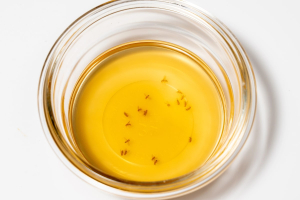
Ongoing care to keep plants (and staff) happy
Prevention beats treatment every time. Simple changes to your plant care routine will keep fungus gnats from returning.
- Check new plants carefully before bringing them into your workspace. Quarantine new additions for a week or two to ensure they’re not carrying pests. Look for tiny flies around the soil and inspect the potting mix for larvae.
- Improve drainage by ensuring all pots have holes in the bottom. If you must use decorative containers without drainage, place plants in smaller pots that fit inside the decorative ones, creating a double-pot system.
- Remove dead leaves and debris from pot surfaces regularly. Decaying plant material provides food for fungi and creates ideal breeding conditions for gnats.
- Aerate the soil occasionally by gently loosening the top layer with a fork. Better airflow helps soil dry faster and reduces fungal growth.
Consider the bigger picture of your workspace wellness. Once your desk plants are gnat-free, you might think about other ways to improve your office environment.
Transform the way you work
Ergonomic office chairs and sit-stand desks promote movement throughout the day, helping reduce stiffness from prolonged sitting.
Creating your gnat-free workspace haven
Knowing how to remove small flies from indoor plants transforms your relationship with office greenery. These methods require minimal effort but deliver maximum impact, letting you enjoy the benefits of plants without the frustration of buzzing insects.
The key is consistency rather than perfection. Check soil moisture regularly, maintain good drainage, and catch problems early. Your plants will thrive, your workspace will feel more inviting, and you can focus on what matters most.
A pest-free plant collection pairs beautifully with thoughtfully chosen office furniture. We help Perth professionals create workspaces that support both productivity and wellbeing.
If you’d like advice on building a healthier office environment, contact our team. We understand that the small details, from gnat-free plants to ergonomic seating, make all the difference in your daily work experience.

